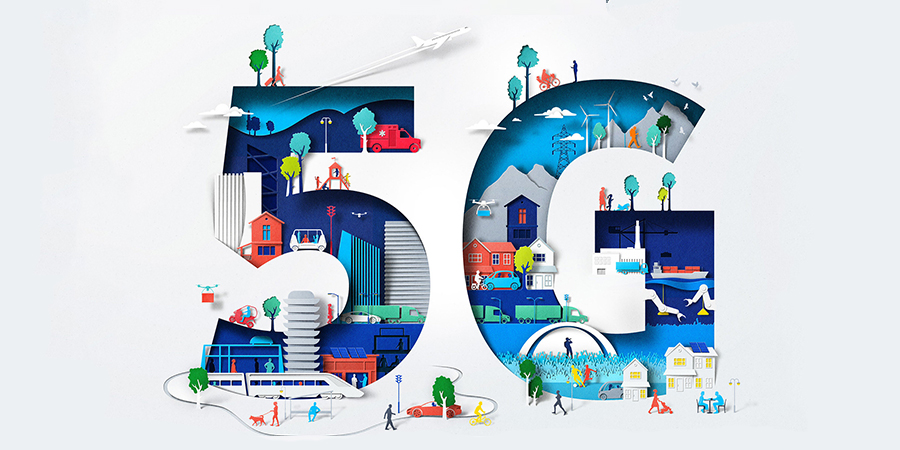5G, the new generation of mobile technology, is on track to become the dominant mobile access technology. It is expected to account for around 50% of all mobile subscriptions worldwide – covering 75% of the world’s population and carrying 62% of the global smartphone traffic by 2027.
Conversely, new-age networks will need to handle hundreds of new applications and services for millions of users as 5G deployment rollouts grow. In fact, according to GSMA, 5G networks are likely to cover one-third of the world’s population by 2025. Hence, the technology’s impact on the mobile industry and its customers will be immense.
With its promise of greater speed, capacity, and low latency, 5G architecture will enable us to fully automate and provide better services to customers by giving operators the flexibility to respond to market demands while keeping costs in check. However, to be successful, 5G warrants multi-billion dollar infrastructure investments. Hence to benefit from 5G, CSPs need to develop cost-efficient strategies and embrace innovation to come up with a strong 5G business case by focusing on the different ways that can give them better return on investment (RoI) opportunities.
Nations opening up borders
As the world economy sets on a recovery mode post the pandemic, network readiness is no longer simply about deploying new technology, but building networks that create value for communities with a broader goal of achieving the UN’s sustainable development goals of bringing people and technology together. The recently published Network Readiness Index (NRI) report ‘Shaping the Global Recovery: How digital technologies can help make the post-COVID world more equal,’ revealed the world’s most ‘network ready’ markets. On top, markets such as the US, Netherlands, Sweden, and Denmark have been ranked as the best followed by markets such as China and India.
To excel in a global economy, every nation must strive to keep up with the technological pace that is taking place. Hence, CSPs need to modernize their network infrastructure with the latest innovations keeping in mind the acceleration of 5G deployments to support regional digital efforts. Innovations such as network virtualization, API-based automation, integrating SD-WAN for various hybrid and multi-cloud services must be on every CSP’s growth strategy.
For instance, developed around DevOps principles, Nokia’s 5G Core will automate the lifecycle management of operators’ networks, as well as enable continuous software delivery and integration. Moreover, with crucial monetization and operations functions such as network slicing, operators can unlock key revenue opportunities and benefit from increased operational efficiencies. During the COVID-19 pandemic, remote work requirements increased cloud-based solutions and gave way for the rapid adoption of cloud services. To keep up with this momentum, containers and microservices will witness greater implementation, making the generational shift to cloud much easier and more streamlined for organizations.
Big business customers
Over the next 5 to 10 years, more than 75% of CSPs expect half of their revenue to come from the B2B segment, according to analyst predictions. Hence, the potential to monetize 5G lies in B2B and B2B2X business models. 5G services in health sectors, governments, schools, and logistics are potential revenue-generating areas. CSPs can integrate public cloud services such as AWS Cloud WAN to create advanced WAN topologies with integrated network segmentation that aligns with their SD-WAN fabric to leverage the 5G benefits of low latency, increased capacity, and fast response delivery. Moreover, in 2022, AI and automation are expected to have dominated most positions in operations. CSPs will need to have an infrastructure that can facilitate this trend as seamlessly as possible and offer value-added services.
Portfolio expansion
CSPs should seriously consider making 5G services available for their other brands and plan types portfolio as more and more people embrace digital services. For instance, Etisalat Group recently acquired 100% of elGrocer – an online grocery delivery platform to support its digital services through their Smiles app to serve its customers by creating a diversified and integrated product portfolio. Furthermore, Etisalat also joined hands with Abu Dhabi-based artificial intelligence services provider G42 to merge their data centre services and create the UAE's largest data centre provider operating under Khazna Data Centers. With such collaboration, Etisalat is well poised to address the data storage and cloud infrastructure demands emerging in the UAE as well as globally.
Conversely, 5G technology calls for huge investment along with the scope of opportunities that may be too big for a single organization to handle. Therefore, fostering a partnership culture with other telcos or companies in other industries can prove to be rewarding. For example, recently Nokia and Ooredoo Group agreed to work together to bring multiple technologies and services, including 5G, as part of a multi-country, five-year deal. The deal, which builds on Nokia’s global partnership with Ooredoo, is already underway and is expected to be completed by 2026.
Reaching the metaverse
Judging from the way things are advancing technologically, the emergence of a hyper-connected universe running on 5G has become realistically possible. No wonder, Nvidia, the world's biggest maker of AI chips and graphics has been strengthening its data center business as more internet companies invest in the metaverse –an online territory that connects people through augmented and virtual reality.
Moreover, 85% of companies are planning to use 5G for future IoT efforts, making IoT communications the most popular target use case for 5G. In this data-heavy traffic flow environment, the need for bigger bandwidth, tighter network security, and reliability are other areas where the 5G superiority is best suited for immersive technologies.
There is no doubt that 5G will have a role to play in every industry’s digital transformation journey soon. Making services easy and quick whilst massively changing the customer experience will be an important KPI for organizations and businesses. CSPs can turn the 5G opportunity to work for them by adopting the right technology, monetization strategies, and future planning to build a competitive advantage with higher revenues and operating margins and steady customer growth.











